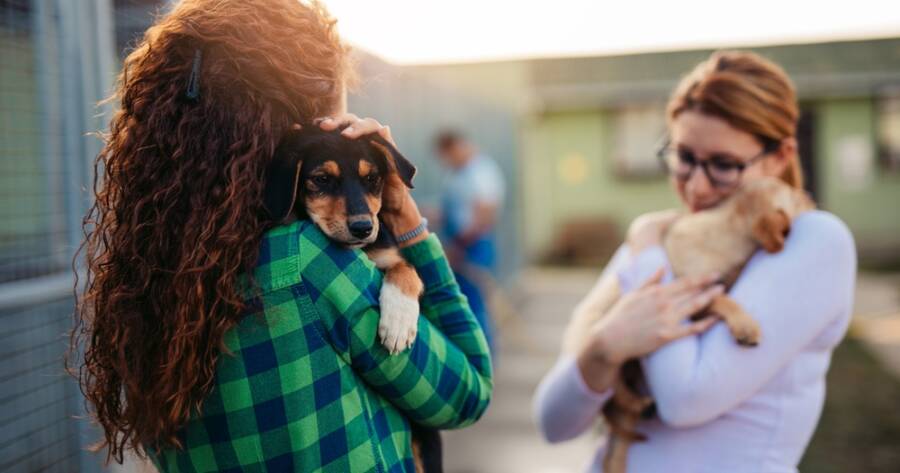Bringing a rescue pet into your home is a rewarding experience, but it requires preparation and understanding. Whether you’re adopting a dog, cat, or another animal, it’s important to be ready for the transition and provide a welcoming environment. Rescue pets may have unique histories and needs, and knowing what to expect can help ensure a smooth adjustment for both you and your new companion. Patience, consistency, and love are key to building a strong bond with your rescue pet.
Preparing Your Home for a Rescue Pet
Before bringing a rescue pet into your home, ensure it’s in a safe and comfortable environment. Remove any hazardous items, such as sharp objects or toxic plants, that your new pet could encounter.
Next, set up a designated space for them, including a bed, water bowl, and toys to make them feel at ease. If you’re adopting a dog, have a crate ready for training and travel. Having everything ready ahead of time will help your rescue pet settle in more quickly and start feeling secure in their new home.
Understanding Your Rescue Pet’s Background
One of the most important aspects of adopting a rescue is understanding your pet’s history. Many rescue pets come from difficult situations such as neglect, abuse, or overpopulation in shelters. This background can affect their behavior, socialization, and adjustment to new surroundings.
It’s helpful to discuss the pet’s history with the shelter or rescue organization to get insight into any fears, triggers, or medical needs they may have. Patience is key when getting to know your new companion, and understanding their past can guide you in providing the best care.
Be Prepared for an Adjustment Period
Adopting a rescue pet often means dealing with an adjustment period. Your new pet may need time to acclimate to their new environment, learn your routine, and bond with you. Some pets may be shy, anxious, or unsure of their new surroundings, so it’s important to provide them with plenty of patience and space.
Allow your pet to explore at their own pace, and avoid overwhelming them with too many new experiences right away. Over time, they will begin to feel more comfortable and trust their new family.
Establish a Routine for Stability and Comfort
Rescue pets thrive on routine, as it helps them feel secure and settled. Establishing a consistent schedule for feeding, exercise, and bathroom breaks is crucial for your new pet’s comfort. If you’re adopting a dog, try to maintain regular walk times and training sessions.
Consistency will help your pet understand what to expect, easing their transition into your home. In addition to routine, incorporate positive reinforcement with rewards for good behavior, reinforcing the sense of stability and trust that your rescue pet needs to feel comfortable.
Introducing Your New Pet to Family and Other Pets
Before adopting, make sure the pet you’re interested in can tolerate any existing pets you have. Be sure to ask the shelter how they interact with other animals and/or children. This can be a huge deciding factor in whether the pet is right for you and your household.
If they’re a good fit, introducing your rescue pet to other members of your household requires care and patience. If you have other pets, it’s important to introduce them slowly and in a controlled manner to avoid stress or aggression. Keep initial meetings brief and positive, allowing each animal to sniff and observe the others from a safe distance.
Gradually increase their interactions over time, providing treats and praise for calm behavior. With children, ensure they understand the need to be gentle and respectful. Positive introductions will help foster harmony among your pets.
Veterinary Care: Checkups and Medical Needs
When you adopt a rescue pet, it’s important to schedule a veterinary checkup shortly after bringing them home. A thorough examination will help identify any underlying health issues and ensure your pet is up to date on vaccinations, flea and tick prevention, and spaying or neutering.
Rescue pets may have neglected health needs, so be proactive in addressing any medical concerns. Your vet can also offer advice on diet, grooming, and behavioral care to ensure your pet’s health and well-being as they settle into their new life with you.
Patience and Positive Reinforcement in Training
Training a rescue pet requires patience and consistency. Some rescue pets have not been properly trained, or they may have behavioral issues stemming from their past experiences. Start with basic commands, like sit, stay, and come, using positive reinforcement techniques such as treats, praise, and gentle encouragement.
Avoid punishment or negative reinforcement, as this can cause fear and confusion. Be patient with your rescue pet as they learn to trust you and their new environment. Over time, consistent training will help your pet adjust and become a well-behaved companion.
Building a Lifelong Bond with Your Rescue Pet
Adopting a rescue pet is a deeply rewarding experience that takes time, patience, and dedication. By preparing your home, understanding your pet’s background, and providing a consistent routine, you’ll create a stable environment where your new companion can thrive.
With love, care, and the right training, you’ll build a strong bond that lasts a lifetime. The journey may come with challenges, but the joy and unconditional love a rescue pet brings to your life make it all worthwhile. Together, you and your new pet will create a future filled with happiness and trust.

